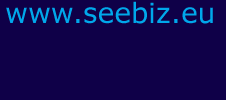First, Break All the Rules
In a world where efficiency and competency rule the workplace, where do personal strengths fit in?
“The world you see is seen by you alone. What entices you and what repels you, what strengthens you and what weakens you, is part of a pattern that no one else shares. Therefore, as Mr. Wilde said, no two people can perceive the same "truth," because each person's perspective is different.”

Marcus Buckingham spent years interviewing thousands of employees at every career stage and is widely considered one of the world's leading authorities on employee productivity and the practices of leading and managing. According to him, companies that focus on cultivating employees' strengths rather than simply improving their weaknesses stand to dramatically increase efficiency while allowing for maximum personal growth and success. Buckingham's opinions are presented in four best-selling books First, Break All the Rules (coauthored with Curt Coffman, Simon & Schuster, 1999); Now, Discover Your Strengths (coauthored with Donald O. Clifton, The Free Press, 2001); The One Thing You Need to Know (The Free Press, 2005) and Go Put Your Strengths To Work (The Free Press, 2007).
This was the book that launched Gallup's HR consulting practice. Taking their organizational core competencies of surveys and data analysis into the workplace yielded a business book that can offer valuable insight to different people. Gallup surveyed millions of workers, defined success for a business unit based on quantifiable outcomes, and then conducted qualitative interviews to follow up on what the best managers were doing differently. Understanding the results will make you a better manager if you are in that position, a better executive if you have to choose managers, and a happier employee if you know what to look for in a manager. So, this book is for everyone who works with others.
We were all told as children that we’ll be more successful if we improve our areas of weakness. However, Buckingham argues that we are better off focusing on our strengths through extensive surveys and in-depth interviews with the best managers.
The "break all the rules" in the title are touched upon in the introductory section of the book: "The greatest managers in the world do not have much in common. They are of different sexes, races, and ages. They employ vastly different styles and focus on different goals. But despite their differences, these great managers do have one thing in common: Before they do anything else, they first break all the rules of conventional wisdom. They do not believe that a person can achieve anything he sets his mind to. They do not try to help a person overcome his weaknesses. They consistently disregard the Golden Rule. And, yes, they even play favorites."
In chapter 2, the author listed twelve questions he calls "measuring sticks of workplace strength", and they are: 1. Do I know what is expected of me at work? 2. Do I have the materials and equipment I need to do my work right? 3. At work, do I have the opportunity to do what I do best every day? 4. In the last seven days, have I received recognition or praise for doing good work? 5. Does my supervisor, or someone at work, seem to care about me as a person? 6. Is there someone at work who encourages my development? 7. At work, do my opinions seem to count? 8. Does the mission/purpose of my company make me feel my job is important? 9. Are my co-workers committed to doing quality work? 10. Do I have a best friend at work? 11. In the last six months, has someone at work talked to me about my progress? 12. Have I had opportunities at work to learn and grow this past year?
Out of the 12, the first six questions are what great managers focus on. These questions have a strong correlation to the business performance of the company, the unit, and the individual. In Chapter 2, the author also lays out the "four keys" of great managers: 1. When selecting someone, they select for talent … not simply experience, intelligence, or determination. 2. When setting expectations, they define the right outcomes … not the right steps. 3. When motivating someone, they focus on strengths … not weaknesses. 4. When developing someone, they help him find the right fit … not simply the next rung on the ladder.
A point that is continually stressed in the book is that people don't leave companies, they leave managers. Another often repeated sentiment is that of excellence and failure being surprisingly similar. Average is the anomaly. You simply can't infer excellence by taking the inverse of failure. The difference between the two lies in how inherent talents are executed, and often those talents are surprisingly similar.
“Talent is the multiplier. The more energy and attention you invest in it, the greater the yield. The time you spend with your best is, quite simply, your most productive time.”
“Great managers play favorites and spend most of their time with their most productive people. Not because they discriminate, but because they deserve the attention and have so much to teach you.”
“A talented employee may join a company because of its charismatic leaders, its generous benefits, and its world-class training programs, but how long that employee stays and how productive he is while he is there is determined by his relationship with his immediate supervisor.”
“The power of skills and knowledge is that they are transferable from one person to another. Their limitation is that they are often situation-specific — faced with an unanticipated scenario, they lose much of their power. In contrast, the power of talent is that it is transferable from situation to situation.”
Marcus Buckingham (born 11 January 1966) is a British author, motivational speaker and business consultant. Basing most of his writing on extensive survey data from interviews with workers in countries around the world, he promotes the idea that people get the best results by making the most of their strengths rather than by putting too much emphasis on weaknesses or perceived deficiencies. Buckingham was educated at Pembroke College, at the University of Cambridge, from which he graduated with a degree in Social and Political Sciences, in 1987.
How many of us, well into our careers, still live with the idea that the purpose of most of our activities is to work on those weaknesses and somehow turn them into strengths? Strengths, natural aptitudes, and in most cases the activities that enhance our well being are almost ignored, simply because so much energy goes into working on those weaknesses. When put this simply, none of us should be surprised at the level of unhappiness sustained by a lot of people in their jobs. With the help of Buckingham’s easy to understand theory, we can turn our professional and personal lives around.
Thanks to the Gallup Organization, over two million successful people in fields from sales to technology were asked what they were doing to succeed. This information, and a 30-year long systematic study of excellence, was conducted by Gallup. As the data was extracted, researchers began to see a pattern of thirty-four mental strengths emerging. “These thirty-four are the most prevalent themes of human talent...Talent is any recurring pattern of thought, feeling, or behavior that can be productively applied. Thus, if you are instinctively inquisitive, that is a talent. If you are competitive, that is a talent. If you are charming, that is a talent. If you are persistent, that is a talent. If you are responsible, that is a talent. Any recurring pattern of thought, feeling or behavior is a talent if it can be productively applied.” The book uses an online personality test called StrengthsFinder (also utilized in other business books) to determine your 5 strongest "themes" of character such as Harmony, Empathy, Activator or Development.
What you need to do, is rediscover the strengths that are an integral part of your own personality, and by strengths Buckingham means, not only the things you excel at but that also give you a sense of satisfaction and contentment. Bosses must be aware of the natural strengths of employees and work on finding ways of using these, instead of regularly planning training programs to help them identify weaknesses that should be subsequently worked on to transform them into strengths, because that just isn’t about to happen. It takes much more energy and investment to work on weaknesses than it does to enhance strengths.
One of the most interesting parts of the book is the discussion of weakness. General opinion is that a good employee is well-rounded, so we have to improve their weaknesses. The authors disagree--you improve your strengths as much as you can, and just keep your weaknesses out of the way. Don't spend a lot of time trying to improve what will never be a strength for you.
What the book lacks in details for each strength area, it makes up for in articulating the differences between dominant talent, a skill set and knowledge. For instance, while it is not easy to identify the exact mix of talent, skill and learning which goes into creating a superlative performance, the absence of talent is to blame in the case of below average performance for the highly skilled and highly knowledgeable person. Talent we cannot produce; we can simply foster an environment to bring out its best.
“Back in the 1930s, Carl Jung, the eminent thinker and psychologist, put it this way: Criticism has the power to do good when there is something that must be destroyed, dissolved or reduced, but [it is] capable only of harm when there is something to be built.”
“From this point of view, to avoid your strengths and to focus on your weaknesses isn't a sign of diligent humility. It is almost irresponsible. By contrast, the most responsible, the most challenging, and, in the sense of being true to yourself, the most honorable thing to do is face up to the strength potential inherent in your talents and then find ways to realize it.”
“There is one sure way to identify your greatest potential for strength: Step back and watch yourself for a while. Try an activity and see how quickly you pick it up, how quickly you skip steps in learning and add twists and kinks you haven't been taught yet. See whether you become absorbed in the activity to such an extent that you lose track of time. If none of these has happened after a couple of months, try another activity and watch-and another. Over time your dominant talents will reveal themselves, and you can start to refine them into a powerful strength.”
“The 'big five' factors of personality are neuroticism (which reflects emotional stability), extroversion (seeking the company of others), openness (interest in new experiences, ideas, and so forth), agreeableness (likability, harmoniousness), and conscientiousness (rule abidance, discipline, integrity).”
To kick-start the strengths revolution, Buckingham and Gallup developed the StrengthsFinder exam (StrengthsFinder.com), which identifies signature themes that help employees quantify their personal strengths in the workplace and at home. Since the StrengthsFinder debuted in 2001, more than 1 million people have discovered their strengths with this useful and important tool.














